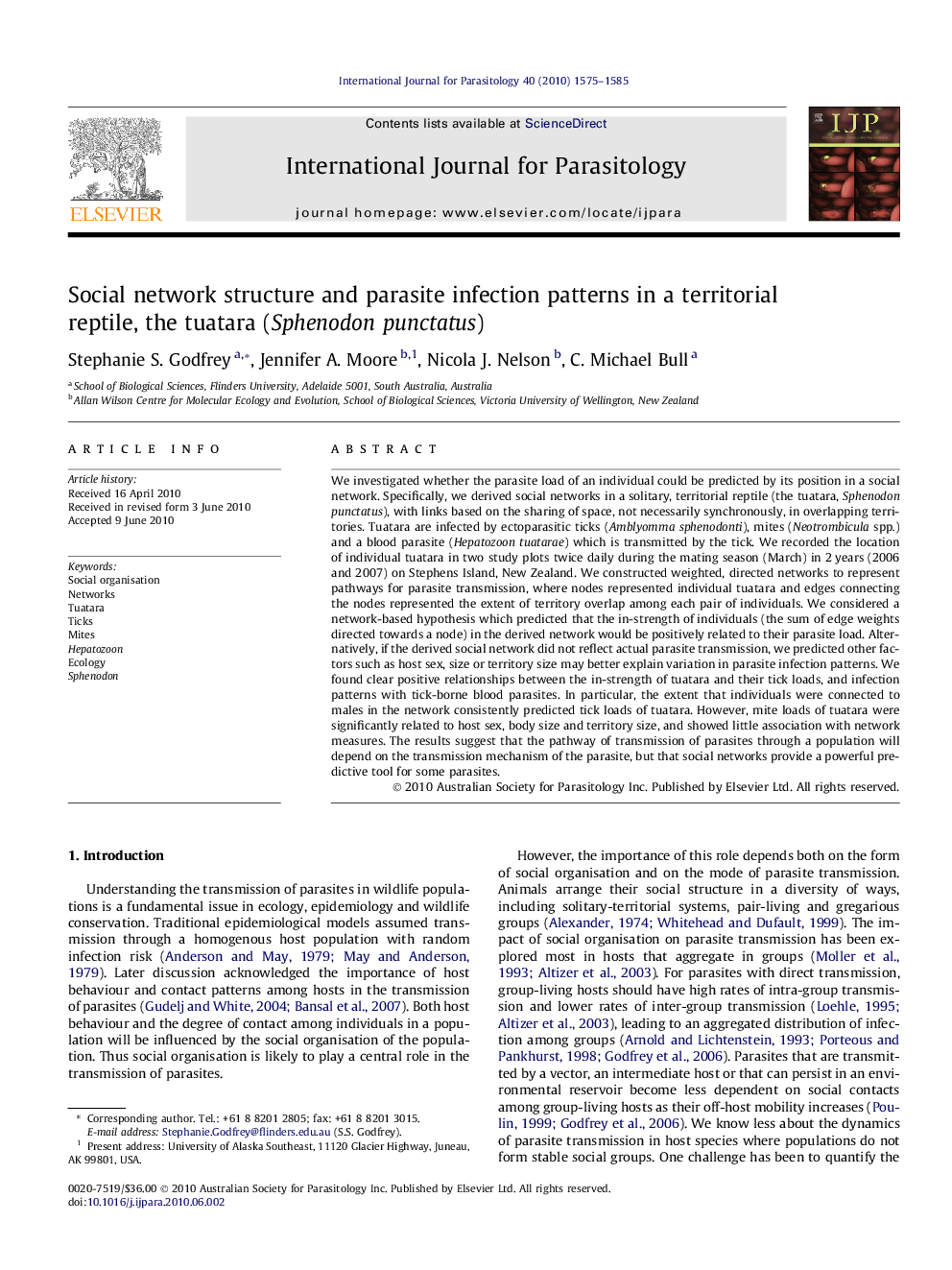| کد مقاله | کد نشریه | سال انتشار | مقاله انگلیسی | نسخه تمام متن |
|---|---|---|---|---|
| 2436345 | 1107301 | 2010 | 11 صفحه PDF | دانلود رایگان |

We investigated whether the parasite load of an individual could be predicted by its position in a social network. Specifically, we derived social networks in a solitary, territorial reptile (the tuatara, Sphenodon punctatus), with links based on the sharing of space, not necessarily synchronously, in overlapping territories. Tuatara are infected by ectoparasitic ticks (Amblyomma sphenodonti), mites (Neotrombicula spp.) and a blood parasite (Hepatozoon tuatarae) which is transmitted by the tick. We recorded the location of individual tuatara in two study plots twice daily during the mating season (March) in 2 years (2006 and 2007) on Stephens Island, New Zealand. We constructed weighted, directed networks to represent pathways for parasite transmission, where nodes represented individual tuatara and edges connecting the nodes represented the extent of territory overlap among each pair of individuals. We considered a network-based hypothesis which predicted that the in-strength of individuals (the sum of edge weights directed towards a node) in the derived network would be positively related to their parasite load. Alternatively, if the derived social network did not reflect actual parasite transmission, we predicted other factors such as host sex, size or territory size may better explain variation in parasite infection patterns. We found clear positive relationships between the in-strength of tuatara and their tick loads, and infection patterns with tick-borne blood parasites. In particular, the extent that individuals were connected to males in the network consistently predicted tick loads of tuatara. However, mite loads of tuatara were significantly related to host sex, body size and territory size, and showed little association with network measures. The results suggest that the pathway of transmission of parasites through a population will depend on the transmission mechanism of the parasite, but that social networks provide a powerful predictive tool for some parasites.
■■■Figure optionsDownload high-quality image (68 K)Download as PowerPoint slide
Journal: International Journal for Parasitology - Volume 40, Issue 13, November 2010, Pages 1575–1585